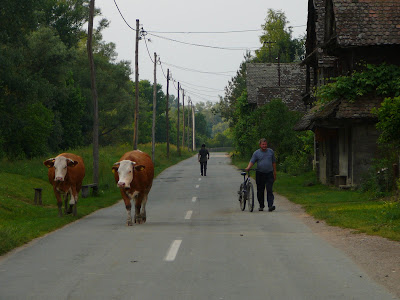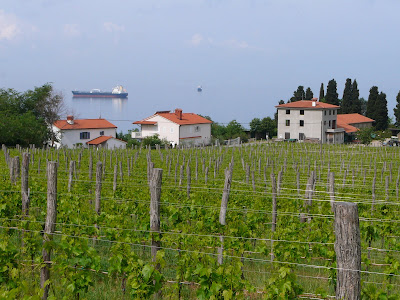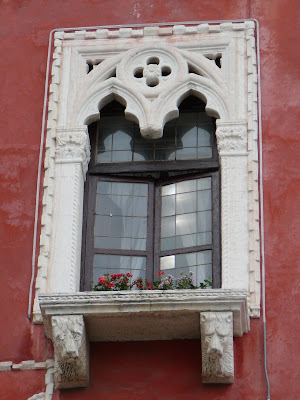The Turks were in Serbia for 500 years, compared with only 150 years in Croatia, and the difference is apparent in the music especially; droning arabic-sounding guitar tunes are popular here.
Thursday, 31 May 2007
Serbia: Novi Sad
The Turks were in Serbia for 500 years, compared with only 150 years in Croatia, and the difference is apparent in the music especially; droning arabic-sounding guitar tunes are popular here.
Croatia: Vukovar and Ilok
The curator of the Vukovar Museum, Ruža Marić, kindly let us stay in her home and showed us around town, then took us out for dinner! She spent 7 years in exile during the Serbian occupation, during which time the old museum was destroyed completely but for the shell. Even though only a small portion of the museum has been restored, it is here that we attended the annual celebrations of Vukovar and it's heritage, spending the night listening to Strauss on the banks of the Danube, a novel experience.
Continuing east to Croatia's most eastern inland point, Ilok, we were again met with generous hospitality: after a personalised 2 hour tour of the town we were allowed to camp on private land on a hill overlooking the Danube. We were then shown to the cherry trees where we proceeded to feast all evening before collecting some more for breakfast!

Ilok was less badly damaged during the war and an old fortress, castle, franciscan monastery and wine cellars remain.
Croatia: Zagreb to Vukovar

Rickety bridge on the way to Krapje
We did detour to Krapje, a village composed of traditional wooden houses, and a nearby wetland reserve. Stork nests on chimneys were a particular attraction.

The area between here and Novska had been mined during the "Homeland War" (1991) and not yet cleared.
Many buildings still bore evidence of heavy damage, especially as we neared Vukovar.
Arriving in Vukovar we met the Danube River. The town of Vukovar suffered particularly heavy casualties, being under seige for 3 months in 1991. Most of the buildings were completely destroyed and the reconstruction process is still in its early stages. As a result the scenery here is shocking and paints a macabre picture.
Wednesday, 30 May 2007
Croatia: Zagreb
At the BBQ we met Darinka's husband Damir, their daughter, and friend Maja. Damir is the only full time employee of bicikl.hr and returned that morning from a cycling conference in Switzerland. The afternoon was spent feasting and chatting about cycling, economics, politics, and various other topics.
That night we met Roger's friend Clare at the bus station and stayed for the next two nights in a good hostel. We did a few touristy things and tried to outdo each other cooking vegetarian feasts.
We also found this curious display of patriotism in a square in Zagreb:
Monday, 21 May 2007
Ljubljana to Zagreb
We followed the river through green farmland, stopping at the occasional castle.
 Zužemberk Castle
Zužemberk Castle Camping at Otočec, on the Krka
Camping at Otočec, on the KrkaContinuing along the Krka we had still more intermittent rain that was becoming tiresome. We stopped at Čatež springs, 5km from the Slovenian - Croatian border and found a collection of huge thermal swimming pool complexes (indoor and outdoor) that we played in for a day. These hot springs had a much more jovial atmosphere with water slides, loud music and families on holiday.
Wednesday, 16 May 2007
Škofja Loka and Ljubljana
From Bled it was an easy cycle through the hills down the Sava River towards Ljubljana. We loved Slovenia so far and wanted to see more, so we detoured to Škofija Loka, a charming little town with another old town and a castle. Here we had some of the best Italian-style ravioli we've ever eaten, for the princely sum of around A$10.
We lined up accommodation at a local "tourist farm" - a mix between a farm and a B&B. These seem to be popular in Italy and Slovenia. They sell local produce and also provide accommodation and cater for functions. Wineries in Australia seem to be following a similar trend. in the morning we were greeted with a rather challenging breakfast of homemade salami, fresh cow's milk, cheese, homemade jam and, strangely, a scoop of pig fat.
We were pleasantly surprised by the cycling culture in Slovenia. We rode into the capital Ljubljana on a Sunday and it seemed that the whole country was out on their bikes that day. Ljubljana has cycle lanes on most streets and bikes generally have right of way over cars. Drivers are also quite considerate and aware.
To top it off, they even produce a cycling beer! Roger discovered soon after this photo was taken that it was actually a shandy :(
Lakes Bohinj and Bled
We explored the area for a couple of days and found out about the old alpine dairy farming and cheesemaking techniques from a little museum. As usual, Roger found a freezing canyon to swim in. This canyon is formed from snow melt coming down from the alps.
Our next destination was Lake Bled, designed for photography. Someone years ago decided to build a church on the island in the middle of the lake. Our photos aren't as good as the postcards but you get the idea:
If that's not enough, there's also another church and a castle on the shore:
Tuesday, 15 May 2007
Karst Region
Having never intended to see the coast at all, we reverted to the original plan of heading north to the alps. This took us through a region of limestone, caves and underground rivers called the "Karst". We chose a rainy day to "cheat" and take a train into the hills to Divaca. Finding the info centre closed we enquired at the local pub for a place to stay. It turns out that the publican also owns a picturesque guesthouse in a hamlet near the caves. It was a cold and wet 4km ride there, but we were welcomed with a few shots of plum brandy to warm us up. It was also offered again the next morning at 9am!
We joined a 2 hour walking tour of the underground cave and river system that ended in a 140m high chasm. We came out of the cave in the hole under the church:
Delayed at the tourist centre by yet more rain, we encountered an Italian wedding party on their photo shoot.

As the rain beat down we caught a 10 minute train to Sežana, then rode across the countryside to a wonderful town called Pliskovica, with not much more than a church and a few houses, where we had heard there was a hostel. The hostel is a renovated old farmhouse now run by a roster of young people from the village.
The next day, the hardest so far, saw us riding over a pass, down a river valley to Nova Gorica and up the Soca River in the rain to Kanal. The Soca is a vivid blue-green.
We arrived thankfully at our campsite, only to find it "closed". We were about to set up anyway, when we were approached by an old man who spoke no English. He made some calls on his phone and his son-in-law arrived some minutes later to open the campsite for us. This was the view:
And this is the hot chocolate available at a local cafe:
The Slovenian Coast

From our campsite south of Trieste we were only 500m from the border with Slovenia. Despite initial plans to head straight for the alps, we couldn't resist detouring further south along the coast first. In Slovenia we suddenly entered a much less familiar environment. Until now, we had muddled through with our basic knowledge of Italian language, customs and food. But nothing in Slovenia was familiar. This made for some interesting supermarket purchases.

We based ourselves in the seaside city of Koper, a lively student city with many architectural highlights: A medieval "old town", cute windows and many narrow and steep cobblestone streets that were challenging on bikes and in wet weather!

A captivating face
Typical Venetian style window

 Piran - note the town wall at the top of the hill
Piran - note the town wall at the top of the hill

A small hill






































